
Journal of Adaptation in Film & Performance
Scope & Guideline
Unveiling the Dynamics of Adaptation Studies
Introduction
Aims and Scopes
- Interdisciplinary Approaches to Adaptation:
The journal encourages studies that adopt interdisciplinary perspectives, merging insights from literature, film studies, theater, and cultural studies to analyze adaptations. - Exploration of Cultural Contexts:
It emphasizes the importance of cultural and historical contexts in adaptations, examining how different societies interpret and transform source materials. - Theoretical Frameworks of Adaptation:
Contributions often engage with theoretical frameworks surrounding adaptation, including fidelity, intertextuality, and the implications of media convergence. - Focus on Monstrous and Gothic Adaptations:
There is a consistent focus on monstrous and gothic themes in adaptations, exploring how horror and the grotesque are recontextualized in various media. - Performance Analysis:
The journal also highlights the role of performance in adaptation, analyzing how staging and acting influence the interpretation of adapted works.
Trending and Emerging
- Cross-Media Adaptation:
There is a growing interest in how narratives traverse across different media forms, particularly in the context of video games, digital media, and graphic novels. - Focus on Monstrosity and Horror:
Recent publications emphasize themes of monstrosity and horror in adaptations, exploring how these elements resonate with contemporary societal fears and anxieties. - Adaptation in the Age of Technology:
Themes surrounding adaptation in the digital age, including discussions of streaming services and online platforms, are increasingly prevalent. - Intersectionality in Adaptation:
The journal is seeing a rise in studies that analyze adaptations through the lens of intersectionality, examining how race, gender, and class are represented and reinterpreted. - Performance and Spectatorship:
There is an emerging focus on the relationship between performance and spectatorship, investigating how audience engagement influences the adaptation process.
Declining or Waning
- Traditional Literary Adaptations:
There is a noticeable decline in papers focusing solely on traditional literary adaptations, as the journal increasingly embraces contemporary and multimedia adaptations. - Historical Adaptation Studies:
Research centering on historical adaptations, particularly those that do not engage with modern reinterpretations or contemporary relevance, seems to be waning. - Adaptation as a Static Process:
The notion of adaptation as a straightforward, linear process is less frequently explored, with more emphasis now on the dynamic and iterative nature of adaptation.
Similar Journals
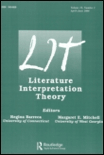
LIT-Literature Interpretation Theory
Unraveling the Tapestry of Textual Interpretation.LIT-Literature Interpretation Theory is a premier academic journal that delves into the intricate relationships between literature and various interpretative theories, published by Routledge Journals, Taylor & Francis Ltd. With an ISSN of 1043-6928 and E-ISSN 1545-5866, this journal has established a notable reputation within the field, evidenced by its ranking in the 71st percentile among peers, and its placement in Q3 of the Literature and Literary Theory category for 2023. Since its inception in 1989 and continuing through 2024, LIT has aimed to provide a platform for the examination of literary texts through diverse theoretical lenses, catering not only to scholars and researchers but also to students and practitioners interested in literary discourse. Although it does not offer open access, the journal continues to be a vital resource for those seeking to enhance their understanding of literary theory within the arts and humanities. With robust insights and critical analyses, LIT contributes significantly to ongoing conversations in literature and promotes innovative interpretations that challenge conventional perspectives.

Cuadernos CANELA
Unlocking Insights into Religion and Cultural DynamicsCuadernos CANELA is a distinguished scholarly journal published by Nanzan University and the Nanzan Institute for Religion and Culture, focusing on the interdisciplinary study of religion and culture. Operating under an Open Access model since 2012, this journal aims to foster global dialogue and accessibility in research, catering to a diverse audience of researchers, professionals, and students. With an emphasis on quality and scholarly rigor, Cuadernos CANELA plays a significant role in advancing the field by providing a platform for innovative ideas and critical discussions that address complex cultural and religious phenomena. As a journal dedicated to expanding knowledge within the intersection of religion and cultural studies, it invites contributions that explore these themes from various geographical and disciplinary perspectives. For more information on submission and access options, please visit our website.

Problemy Istoricheskoi Poetiki
Innovating Insights in Literary Theory and PracticeProblemy Istoricheskoi Poetiki is a leading academic journal in the field of Literature and Literary Theory, published by PETROZAVODSK STATE UNIVERSITY since 1990. With an impact factor that places it in the Q1 category for 2023, this journal is distinguished for its scholarly contributions, ranked #169 out of 1106 in the Scopus Arts and Humanities category, which positions it in the 84th percentile. Focused on advancing the understanding of historical poetics, the journal encourages rigorous research and offers Open Access to its published works, ensuring the dissemination of knowledge across borders, while fostering collaboration among scholars globally. The editorial board is committed to publishing innovative and insightful articles that address crucial themes in literary history, theory, and interpretation, making it an essential resource for researchers, professionals, and students alike. The journal's harmonious convergence of traditional literary studies with contemporary analytical approaches makes it a vital platform for exploring the dynamics of literature within its historical contexts.

Stanislavski Studies
Illuminate Your Understanding of Stanislavski's Influence.Stanislavski Studies is a distinguished academic journal dedicated to exploring the profound impact of Konstantin Stanislavski's methodologies on the field of performing arts. Published by Routledge Journals, Taylor & Francis Ltd, this journal has quickly established itself as a leading resource since its inception in 2012, achieving a Q1 ranking in both Visual Arts and Performing Arts categories as of 2023. With a Scopus Rank of #181 out of 667, it occupies a prominent position within the 72nd percentile in Arts and Humanities, affirming its significance to scholars and practitioners alike. Although currently not an Open Access journal, it provides crucial insights and scholarly articles that delve into Stanislavski's techniques, applications, and influence on contemporary theater practices. Based in the United Kingdom, the journal aims to facilitate rigorous scholarship and stimulate discussions among researchers, professionals, and students passionate about the performing arts, thereby contributing to the ongoing evolution of theater education and practice.

Anuario Calderoniano
Elevating Discourse on Calderón's Timeless WorksAnuario Calderoniano is a distinguished academic journal published by IBEROAMERICANA EDITORIAL VERVUERT S L, dedicated to the field of literature and literary theory. With an ISSN of 1888-8046 and a notable presence in the academic community, it is recognized for its insightful analyses and contributions to Calderonian studies. The journal has been systematically published from 2013 to 2015 and from 2017 to 2023, consistently examining the works of renowned playwright Pedro Calderón de la Barca and their relevance in contemporary literary discourse. As a Q3 journal in the Literature and Literary Theory category for 2023, it ranks in the 68th percentile among its peers, reflecting its importance and scholarly contribution to the field. While currently not offering open access, the journal remains a crucial resource for researchers, professionals, and students aiming to deepen their understanding of literary narratives and critical perspectives.
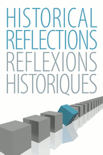
HISTORICAL REFLECTIONS-REFLEXIONS HISTORIQUES
Uncovering the Layers of Time Through Thoughtful ReflectionHistorical Reflections / Reflexions Historiques is a pivotal academic journal in the field of history, published by Berghahn Journals. Established to provide a platform for innovative historical scholarship, the journal offers a unique blend of theoretical discussions and empirical studies that critically engage with new interpretations and methodologies. With a robust reputation evidenced by its category ranking in the 2023 Q3 History quartile and a Scopus ranking of #1164 in the Arts and Humanities, Historical Reflections serves as an essential resource for researchers, professionals, and students alike. Although the journal is not available through open access, it contributes significantly to historical discourse through its diverse range of articles, fostering a deeper understanding of past events and their implications for the present and future. As it continues to evolve from its inception in 1977 to the present day, Historical Reflections remains committed to advancing the field through rigorous analysis and scholarly debate.
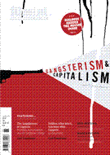
Film International
Celebrating the Intersection of Film, Culture, and Society.Film International is a prominent journal dedicated to the exploration of film and its cultural, social, and artistic significance. Published by INTELLECT LTD, this journal serves as a platform for interdisciplinary studies in the field of film criticism, theory, and scholarship, contributing valuable insights from both established and emerging researchers. With an ISSN of 1651-6826 and an E-ISSN of 2040-3801, the journal is an essential resource for those engaged in the realms of communication, cultural studies, and visual arts, though it is currently classified in the lower quartiles of these fields (Q4). Noteworthy for its critical perspectives and diverse content, Film International enhances the dialogue surrounding cinematic practices and their impact on society. Researchers, professionals, and students can explore its rich assemblage of articles and reviews that reflect the evolving landscape of film studies, making it a significant addition to the academic community focused on the art of film.
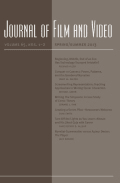
JOURNAL OF FILM AND VIDEO
Illuminating the Intersection of Film and TheoryThe JOURNAL OF FILM AND VIDEO, published by University of Illinois Press, is a pivotal academic platform that delves into the intricate intersections of film, video, and media studies. With a notable ISSN of 0742-4671 and E-ISSN 1934-6018, this journal has established itself as a significant contributor to the visual arts and performing arts field, currently positioned in Q3 of its category as per the 2023 quartiles. Spanning from 2002 to 2024, it presents a comprehensive array of research, critiques, and theoretical discussions that advance scholarly discourse in film and video. The journal encourages contributions that explore innovative narratives and methodologies, catering to a diverse readership of researchers, professionals, and students alike. While it maintains a traditional subscription model and is not open access, its impact is amplified through its Scopus ranking, holding the 323rd position out of 667 in the visual arts and performing arts category. With its commitment to fostering critical conversations and promoting scholarly excellence, the JOURNAL OF FILM AND VIDEO remains an essential resource for those invested in the study and understanding of film and media.

Studi Pasoliniani-Rivista Internazionale
Illuminating the Intersection of Literature and CinemaStudi Pasoliniani-Rivista Internazionale is a distinguished academic journal dedicated to the exploration of the works and influence of Pier Paolo Pasolini, an eminent figure in Italian literature and cinema. Published by Fabrizio Serra Editore in Italy, this journal adheres to a multidisciplinary approach that encompasses critical analyses in linguistics, literature, and literary theory, making it a valuable resource for researchers and scholars seeking to deepen their understanding of Pasolini's legacy. Currently, Studi Pasoliniani holds a Q4 quartile ranking in both Linguistics and Language and Literature and Literary Theory, reflecting its commitment to fostering scholarly discourse within these fields. Although the journal does not operate under an open access model, its publication from 2019 to 2023 assures that its content remains relevant and beneficial for academic inquiry. Researchers, professionals, and students alike will find this journal an indispensable venue for engaging with contemporary interpretations and critiques of Pasolini's oeuvre, amidst the rich cultural and historical contexts that inform his work.
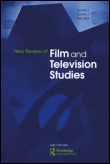
New Review of Film and Television Studies
Cultivating Knowledge in the Realm of Screen StudiesNew Review of Film and Television Studies, published by Routledge Journals, Taylor & Francis Ltd, stands as a vital platform for scholars and practitioners engaged in the dynamic fields of film and television studies within the United Kingdom. This journal, which has been in circulation since 2010 and will continue through 2024, provides a rigorous academic forum for contemporary research, critical analysis, and innovative discourse surrounding visual storytelling. With an impressive Scopus rank placing it in the 66th percentile for Visual Arts and Performing Arts, and a respectable Q2 categorization, the journal fosters an interdisciplinary approach, bridging communication and cultural studies. While the journal does not currently operate under an open access model, it remains an invaluable resource for researchers, students, and professionals aiming to understand and influence the evolving landscape of film and television in our digital age. As it navigates the intersection of media and society, New Review of Film and Television Studies is essential reading for those looking to advance their knowledge and contribute to the ongoing scholarly conversation.